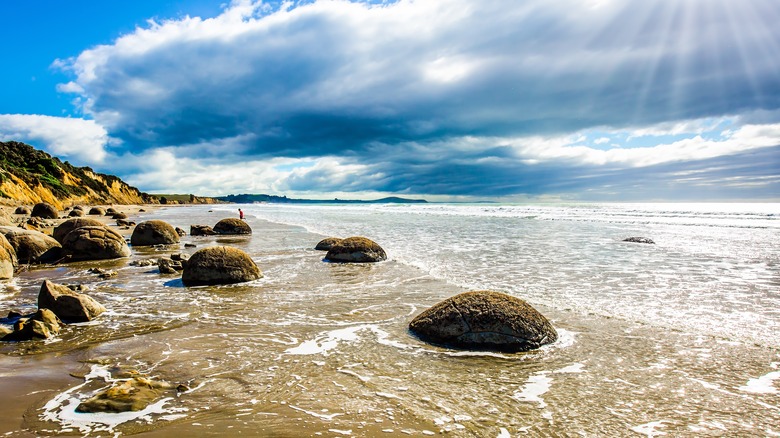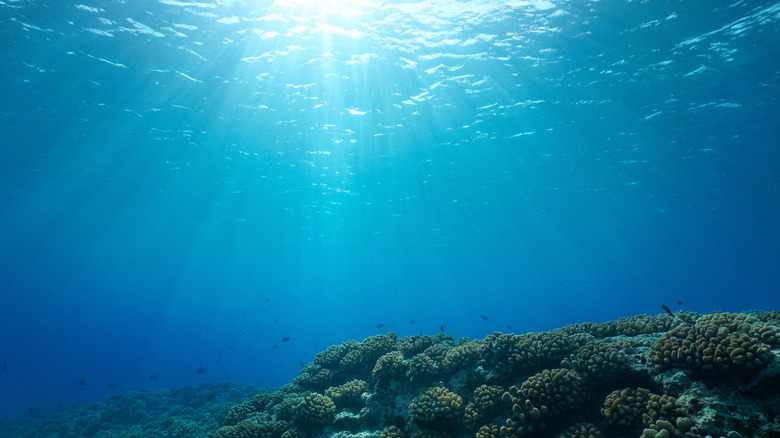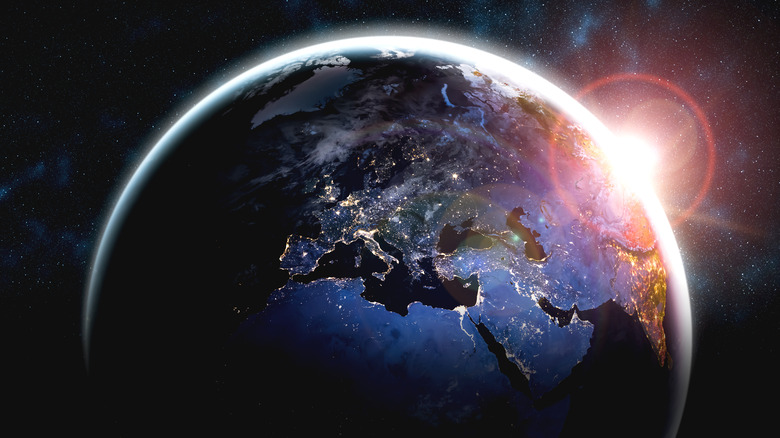How Many Years Will It Take For The Pacific Ocean To Disappear?
The Pacific Ocean is the oldest ocean in existence. At around 200 million years old, the oceanic crust is located east of Mariana Island in the western equatorial Pacific. The Pacific Ocean is unique not only in age but in its large number of subduction zones, the areas where two tectonic plates collide, with one plate sliding under another (via Science Alert). In the Pacific, these zones form what is known as the "Ring of Fire," a geologically active area that can result in earthquakes and volcanic activity (via Britannica).
The world's largest and deepest ocean (per National Ocean Service) is decreasing in size by a few centimeters each year. This led many scientists to conclude via simulations of tectonic shifts that the Pacific Ocean will one day be no more. Its closure would result in what scientists are calling "Amasia," a supercontinent similar to Pangea, which existed until the early Mesozoic era (or the age of the dinosaurs) when the continents began to shift into their current configuration. The Pacific was the massive ocean that surrounded Pangea, but its glory days will eventually be over (via The Weather Channel).
About the Pacific Ocean
Taking up one-third of the planet and claims over 60 million square miles between China and California, the Pacific Ocean is enormous in its range and depth. It has more mass than all of the continents on the planet combined. In terms of depth, the ocean is home to the deepest area on the planet: the Mariana Trench. The trench runs along the Ring of Fire and reaches depths of seven miles — a greater depth than Mt. Everest can claim in height. It is called the Challenger Deep, and at 36,000 feet, sunlight cannot penetrate, and most of the life on the planet would be crushed by the immense pressure (per National Geographic).
The name itself implies irony, since the name Pacific means "pacify," an appellation given to it in 1520 by Ferdinand Magellan, an explorer who had the good fortune of sailing on a sedate patch of water. Yet the Pacific births roiling hurricanes of intense magnitude on top of its penchant for producing earthquakes and tsunamis (via National Geographic).
Amasia and the fate of the oldest ocean
Since its days as the super ocean called Panthalassa (via The Weather Channel), the Pacific's steady shrinkage will prove to be its end, according to computer simulations from Australia's Curtin University. Every year, the plate shifts under the Indo-Australian and Eurasian plates, thus reducing the distance between Australia, Asia, and North America. In light of this, researchers have set the maximum date of demise for the Pacific Ocean at around 300 million years from now, when it gives way to the supercontinent Amasia, according to Science Alert.
Scientists say that the Earth has been in a "supercontinent cycle," which means for the last 2 billion years, the planet has been through continental shifts every 600 million years which result in a supercontinent. They believe Amasia could begin forming when America shifts toward Asia until the two collide. Australia may follow suit, eventually becoming one with both Asia and America. If the predictions are correct, Earth will have temperature changes, lower sea levels, and a new ecosystem with animals — and possibly humans — standing atop the Pacific plate that once held the ocean of a bygone era (per The Weather Channel).


